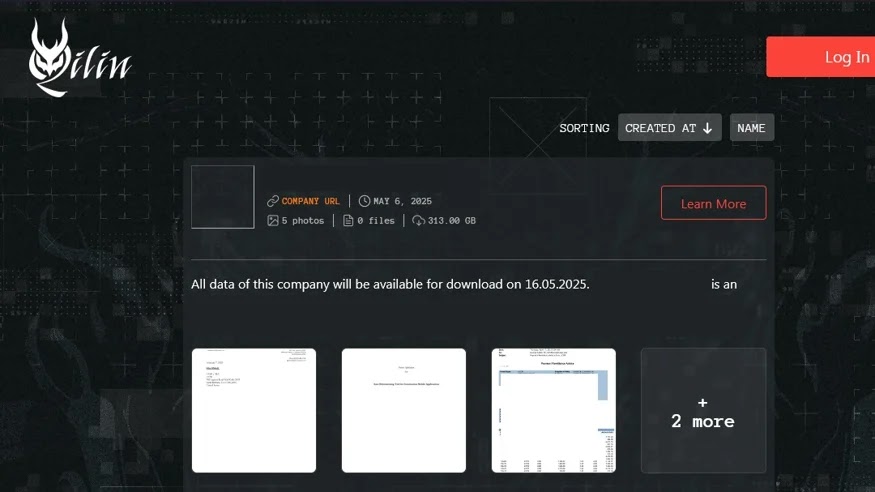The ransomware threat landscape is undergoing a significant transformation in 2025, with instability and infighting disrupting previously dominant groups.
Major players such as RansomHub, LockBit, Everest, and BlackLock have either collapsed, experienced hostile takeovers, or suffered high-profile breaches in recent months. As these established groups falter, new contenders are stepping into the vacuum.
At the forefront is the Qilin ransomware operation, which is rapidly emerging as one of the most technically advanced and adaptable threats targeting Windows, Linux, and ESXi environments.
Ransomware Ecosystem Turmoil Fuels Qilin’s Rise
Qilin distinguishes itself through a robust Ransomware-as-a-Service (RaaS) model. Its malware suite, written in Rust for Windows and C for Linux/ESXi, exemplifies cross-platform sophistication.
Qilin’s affiliate panel offers a wide range of operational features, including customizable encryption modes, network propagation, system log cleansing, automated safe mode execution, and negotiation tools.

The group has gone further than most, providing petabyte-scale (PB-scale) exfiltration storage, legal consultations, and media pressure services positioning itself as a full-service cybercrime platform.
Technical analysis reveals Qilin’s notorious adaptability. On Windows, the ransomware harnesses command-line parameters and requires a specific password to launch, enhancing evasion against sandboxes and dynamic analysis tools.
Once active, it leverages tools such as PsExec for lateral movement, deletes shadow volumes, clears event logs, and modifies victim environments by pushing ransom notes via printer spools and desktop wallpapers.
Further, it demonstrates an acute awareness of enterprise systems by targeting Active Directory components and seeking to compromise VMware vCenter and ESXi hosts through automated credential harvesting, root password changes, and SSH enablement.
Advanced Techniques Enable Cross-Platform Impact
On Linux and ESXi, Qilin’s C-based variant targets both traditional workloads and virtualized infrastructure, focusing on critical data repositories and virtualization platforms such as VMware, Nutanix, Xen, and KVM.

According to Cybereason Report, the ransomware optimizes for system persistence and maximum disruption by killing virtual machines, deleting snapshots, and attacking key folders for enterprise databases and containers (MySQL, MongoDB, Docker, etc.).
It injects ransom demands not only as files but also into the system’s “Message of the Day” (motd), ensuring high visibility for administrators and users alike.
Qilin’s approach to ransomware delivery is highly configurable. The malware supports multiple encryption modes ranging from full to partial (step-skip, fast, percent) allowing affiliates to tailor attacks for speed or thoroughness.
Notably, it offers a “Call Lawyer” function for legal escalation in ransom negotiations.
Additional features include DDoS attack options and a spam toolset for pressuring victims or amplifying disruption.
The rapid ascendancy of Qilin coincides with the disarray among older ransomware groups.
The abrupt disappearance of RansomHub in March 2025, the defacement and breach of LockBit by vigilante actors, and the apparent merging or absorption of mid-sized operations like BlackLock by emerging groups such as DragonForce, all highlight a turbulent shift in underground power dynamics.
Amid this chaos, Qilin is actively recruiting affiliates and expanding its influence across major Russian darknet forums, with a growing roster of claimed victims and an ever-expanding portfolio of leaked data.
Security researchers emphasize that Qilin’s technical agility, comprehensive RaaS platform, and willingness to innovate make it a formidable adversary for organizations operating traditional, hybrid, or virtualized environments.
As older criminal brands collapse or morph, defenders should expect Qilin’s activity to increase and diversify throughout 2025.
Indicators of Compromise (IOC)
| Type | Indicator | Description |
|---|---|---|
| IP Address | 185[.]208.156[.]157 | FTP data share server |
| IP Address | 185[.]196.10[.]19 | FTP data share server |
| IP Address | 80[.]64.16[.]87 | Qilin WikiLeaks V2 site |
| SHA-256 Hash | 31c3574456573c89d444478772597db40f075e25c67b8de39926d2faa63ca1d8 | Qilin Windows (Rust) loader |
| SHA-256 Hash | c9707a3bc0f177e1d1a5587c61699975b1153406962d187c9a732f97d8f867c5 | Qilin Windows ransomware sample |
| SHA-256 Hash | 13cda19a9bf493f168d0eb6e8b2300828017b0ef437f75548a6c50bfb4a42a09 | Qilin Linux (C variant) loader |
| SHA-256 Hash | a7f2a21c0cd5681eab30265432367cf4b649d2b340963a977e70a16738e955ac | Qilin Linux ransomware sample |
Find this Story Interesting! Follow us on LinkedIn and X to Get More Instant Updates